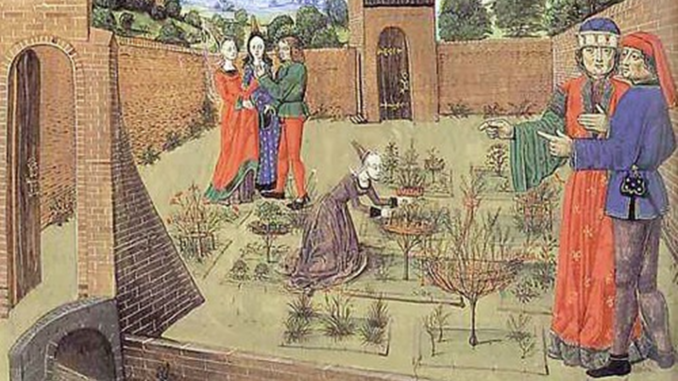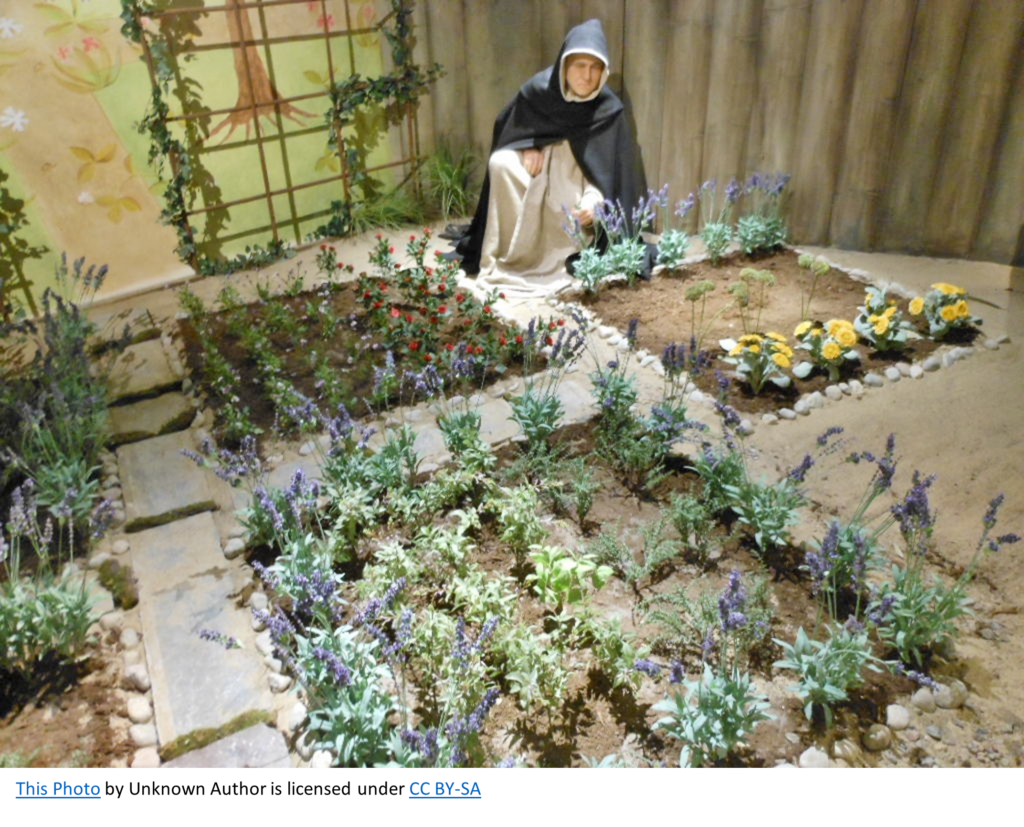

by Jessica Clarke | Gardens on Spring Creek
If we look at the styles and uses of gardens through the ages, we can see how they reflect the human experience of the time. A great example of this is the victory gardens planted during World Wars I and II. Other displays of this relationship between people and their gardens can be seen throughout the Middle Ages. Medieval garden styles reflected the times – war, Viking raids, Crusades, famine, plague, and structural feudalism all had their influence on the English medieval garden. One of the most significant influences on the people of Medieval Great Britain was the Christian church. Church gardens became the center of Christian monastic life and came to have a long-lasting impact on Western gardening styles.
The first monasteries were built in Great Britain in 598 C.E. and within the walls of the monastery were the monks’ gardens. A large percentage of the monasteries in the Middle Ages were Roman villas before they were converted into places of worship. Romans adapted the enclosed courtyard garden and brought the style with them when they came to the British Isles. For the Romans, the enclosed garden or peristyle would have served as a place of beauty and relaxation. During the Early Middle Ages, monasteries took advantage of the enclosed walls and used them for protection rather than leisure.

Warfare and conflict were a part of daily life during the Middle Ages. To prepare for such attacks, monasteries (and castles) built gardens within protected walls to outlast their enemies’ sieges. Monks would grow herbs, vegetables, and medicinal plants, allowing the monastery to be self-sufficient. Their lives and those of the surrounding villagers depended on their abilities to grow successful crops. Due to these outside forces and the rigorous lifestyles of monasteries, monks became highly knowledgeable and experienced in gardening.
Not only did the Romans’ architecture have a role in medieval monasteries, but so did their literature. Monks were one of the fortunate groups in medieval society that were bilingual, literate, and had access to Roman manuscripts. One of the Romans’ most popular topics was plants and gardens. As a society, they were interested in horticulture and still have a big influence on our practices today. As a result, we see that many English monasteries implemented Roman garden techniques. This can be seen in their geometrical designs of classically symmetrical garden beds that have paths between them that allowed easy access for harvesting. They also continued the practice of cultivation from the Romans. They utilized this skill to grow vegetables and eventually ornamentals such as roses and lilies (which had significant symbolism in the medieval era).
The practices of such monasteries continue to influence gardens for centuries to come. Not only did the people of the medieval area prosper from it, but so do gardeners today! From the symmetrical design of garden beds to the cultivars of today, we can still see medieval garden inspiration.
Support Northern Colorado Journalism
Show your support for North Forty News by helping us produce more content. It's a kind and simple gesture that will help us continue to bring more content to you.
BONUS - Donors get a link in their receipt to sign up for our once-per-week instant text messaging alert. Get your e-copy of North Forty News the moment it is released!
Click to Donate
